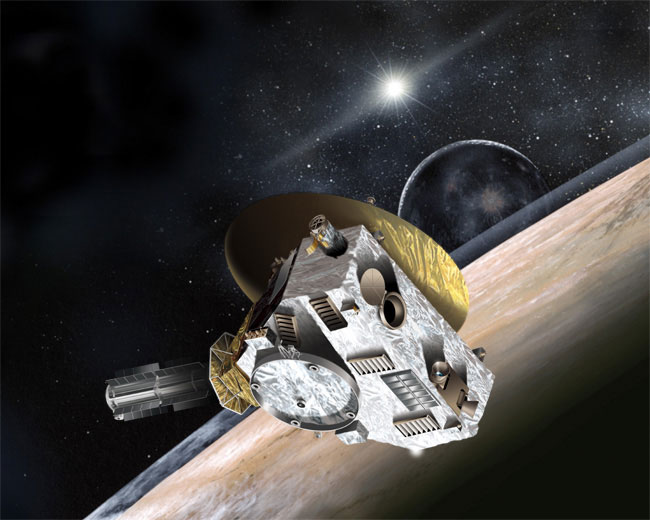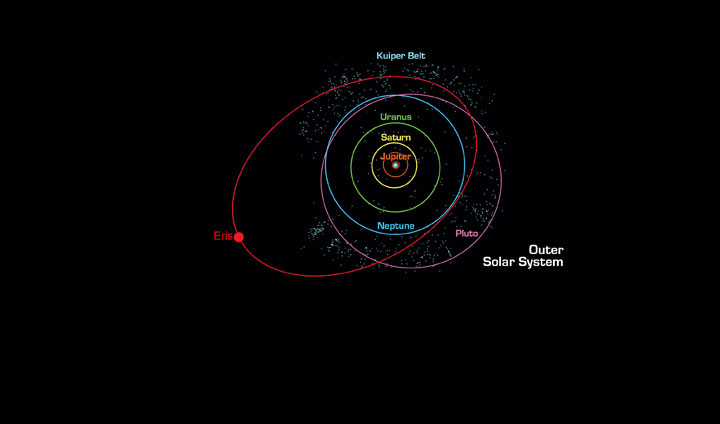TORONTO – It may have been demoted from planet to dwarf planet in 2006, but those involved with the mission to Pluto aren’t letting that stop their enthusiasm.

“It’s kind of hard not to be excited,” said Dipak Srinivasan, of Johns Hopkins Applied Physics Laboratory. Srinivasan worked as a system verification engineer on the New Horizons spacecraft that is a year out from reaching its destination.
READ MORE: New names for Pluto moons; Vulcan neither lives long nor prospers
Pluto – once considered the ninth planet in our solar system – is the most mysterious world in our solar system. At an average distance of 5.9 billion km from the sun (about 3 billion from Earth), its composition and exact nature has eluded astronomers.
But in just one year, that won’t be the case.
New Horizons, the fastest spacecraft ever built – travelling at a mind-blowing 43,000 km/h – will pass within 10,000 km on July 14, 2015.
Getting to this point has been a long time coming for those who have worked on the spacecraft.
“Some of us started working on the mission back around 2000 or 2001, so to finally be at this point right now is very exciting,” said Mark Holdridge, New Horizons’ Encounter Mission Manager with Johns Hopkins Applied Physics Laboratory.
But unlike other spacecraft – such as NASA’s Cassini, now in orbit around Saturn – there will be no stopping: being ultra-fast means being ultra-light which in turn means being unable to stop. That means that the data collected will be within a very short time-span.
That’s not to say that it will only have a day to observe and collect data: the cameras on New Horizons will be focused on Pluto and Charon – the icy world’s largest moon – months before it arrives. It’s seven scientific instruments will collect data on Pluto’s composition, atmosphere, and as well as how the solar wind might influence the tiny world.
A planet by any other name
American astronomer Clyde Tombaugh discovered Pluto in 1930 at the Lowell Observatory in Flagstaff, Arizona (interestingly, the name was chosen by an 11-year-old British girl).
In 2006, little Pluto was “demoted” by the International Astronomical Union and reclassified as a dwarf planet after similar worlds were discovered beyond its orbit. The decision was met by anger. World-renowned astrophycist Neil deGrasse Tyson, who is also the head of the Hayden Planetarium in New York, received angry letters blaming him for the “death” of Pluto, claiming he got the ball rolling (in 2000, the redesigned planetarium omitted Pluto from the collection of planets in the solar system, reclassing it as a member of the Kuiper Belt, a region beyond the orbit of Neptune that is home to icy worlds).
But to Holdridge, it doesn’t make a difference.
“To me, it doesn’t matter because it is what it is, regardless of what label you put on it,” Holdridge said. “It doesn’t really change what it is….Regardless of how big or small it may be, it’s still going to be as interesting.”
“It’s all about discovery and just figuring out another piece of the puzzle of our solar system,” Holdridge said.
READ MORE: Hubble Space Telescope spies smallest moon yet around former planet Pluto
But once New Horizons reaches Pluto, its mission isn’t over. Scientists plan to further explore the outer reaches of our solar system in the Kuiper Belt, home to not only Pluto and many other dwarf planets such as Eris, discovered in 2003 by Mike Brown (which lead to Pluto’s demotion), Makemake and Haumea.
“One of the interesting things is that we’re going to fly by Pluto, but then the journey is ongoing… It will be interesting to me to see where we go next,” Srinivasan said.
Holdrige is hoping that the mission discovers things that scientists haven’t even considered about Pluto.
“I think it’s the unexpected I’m hoping for,” said Holdridge. “It’s the excitement of discovery.”




Comments